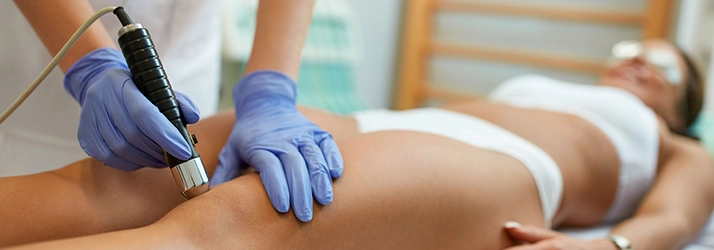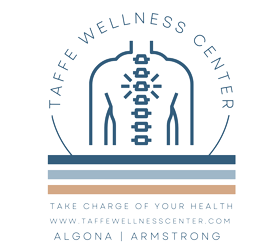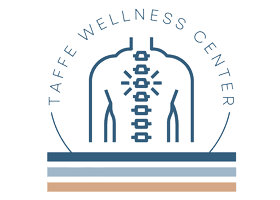Shockwave Therapy

Taffe Wellness Center in Algona IA and Armstrong IA uses Shockwave Therapy as a part of a whole-patient approach to improving patient health and well-being. Officially called low-intensity extracorporeal shockwave therapy (Li-ESWT), the procedure is more commonly known as shockwave therapy.
CONDITIONS TREATED BY SHOCKWAVE THERAPY
- Tennis Elbow
- Achilles
- Rotator Cuff
- Plantar Fasciitis
- Peripheral Neuropathy
- Jumper's Knee
- Calcific Tendinitis Of The Shoulder
THERE MAY BE HOPE FOR YOU
The energy waves stimulate the body’s natural healing mechanisms through microtrauma to the area.
It triggers your own regenerative cells to come to the area and heal the tissue.
It enhances vascularization and nerve regeneration as well.
HOW IS THERAPY DONE?
Your Algona IA and Armstrong IA therapists will discuss your symptoms with you and locate the source of pain. They will then mark the area intended for the Shockwave Therapy. A gel is applied to optimize the contact between the application device and your skin. The handpiece delivers pulsations to the pain area for a number of prescribed pulses, depending on the condition.
Frequently Asked Questions
Success Rates: 90% improvement was recorded for the treatment of Plantar Fasciitis (heel pain) by the Journal of Orthopedic Research (2005). The same publication quotes a 77% success rate when treating Tennis Elbow with Radial Shockwave Therapy and other clinical studies have generally reported a success rate in excess of 75%. Nice (National Institute of Clinical Excellence) provided evidence to the NHS: NICE evidence for Shockwave.
Shockwave Therapy is FDA cleared for the treatment of acute and chronic musculoskeletal pain and connective tissue disorders; there are no known risks or complications.
Shockwave therapy is an elective pay modality and is not covered by insurance.
Shockwave Therapy is not recommended for patients on blood thinners, those with malignancies, and those who are pregnant.
Shockwave treatment is often performed once a week for a period of 3-6 weeks, depending on Chronicity of the problem.
Patients may begin to see improvement 4 weeks after their last treatment. More significant improvement often occurs 8-12 weeks after the last treatment.



